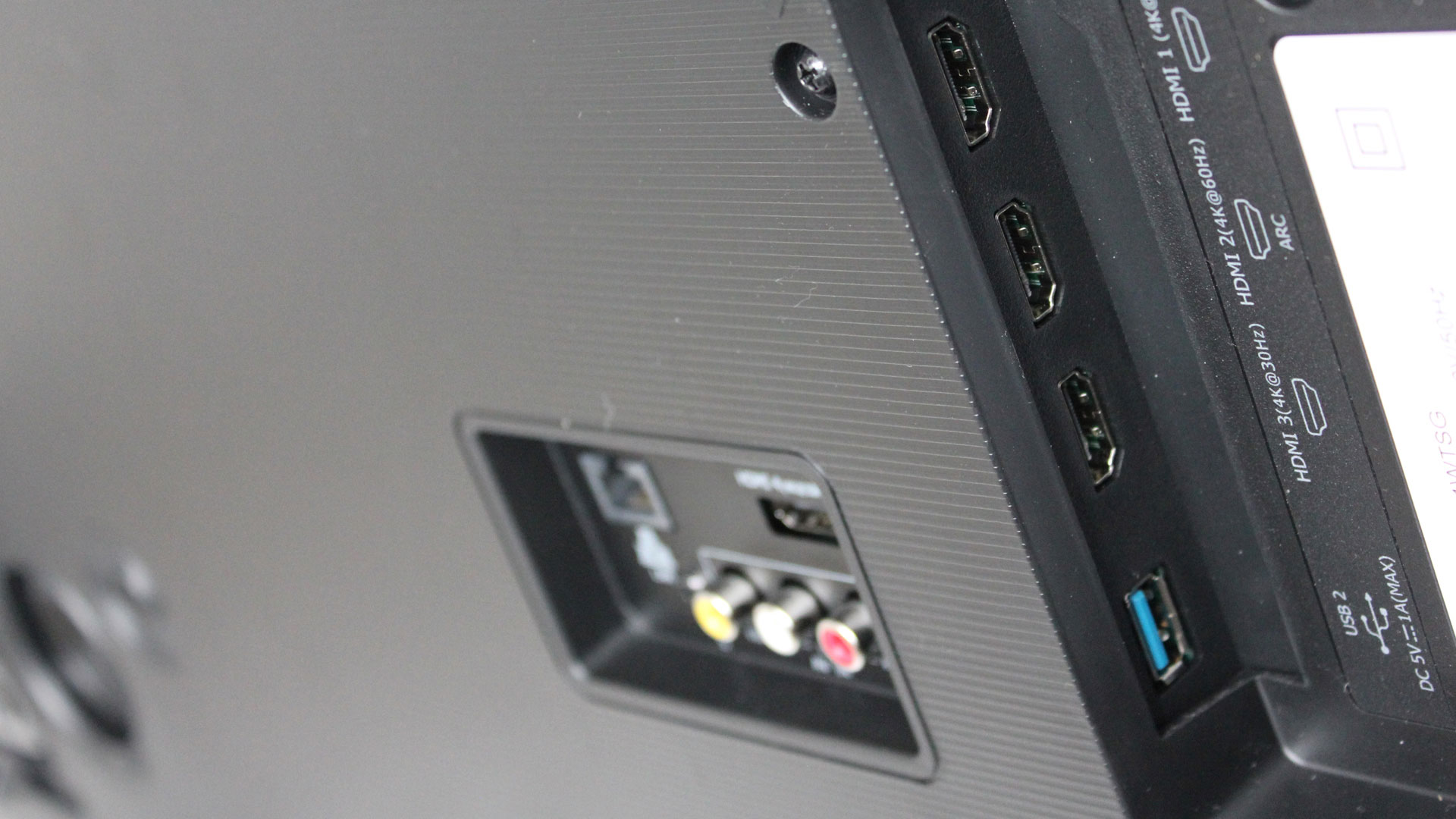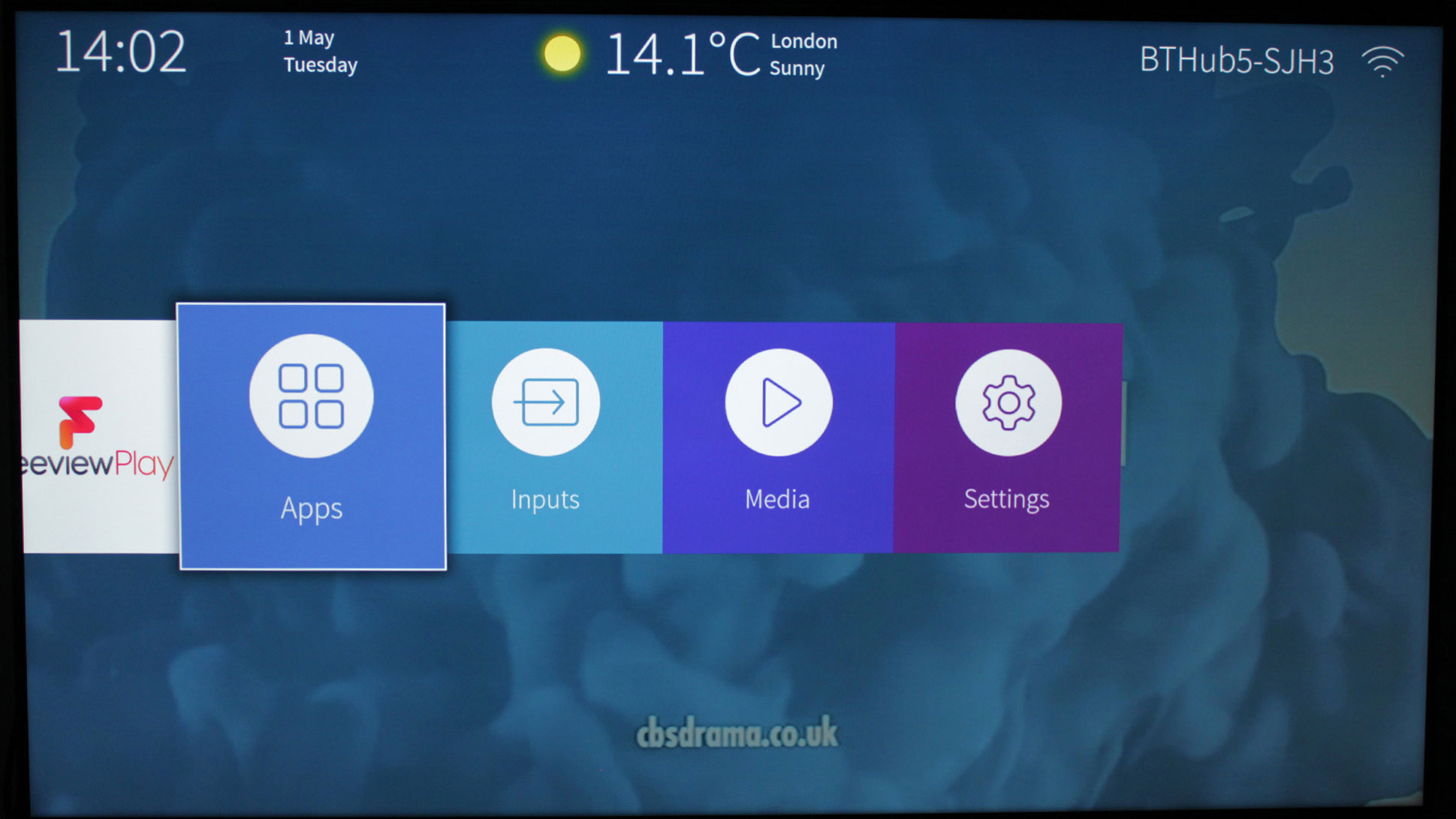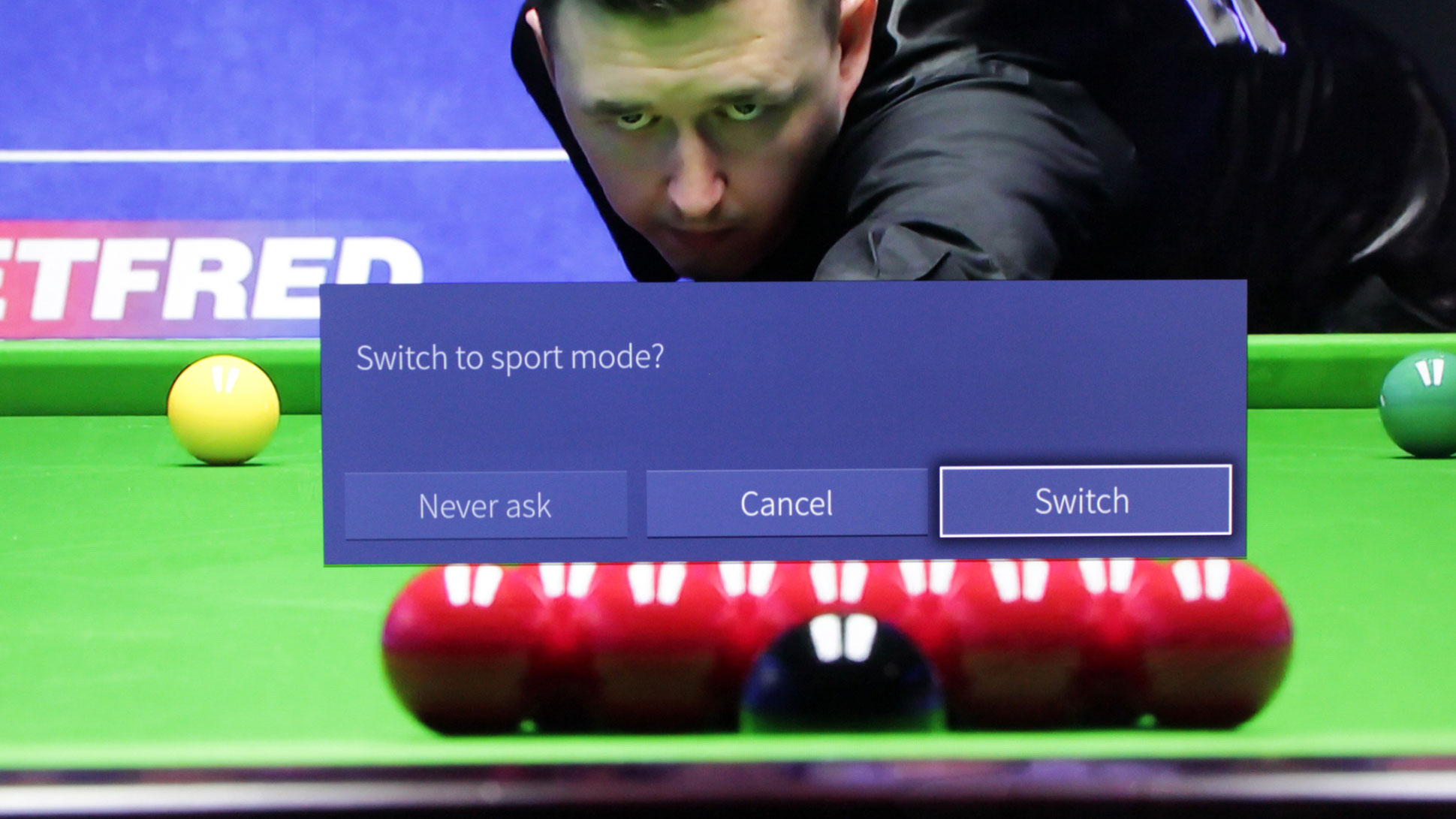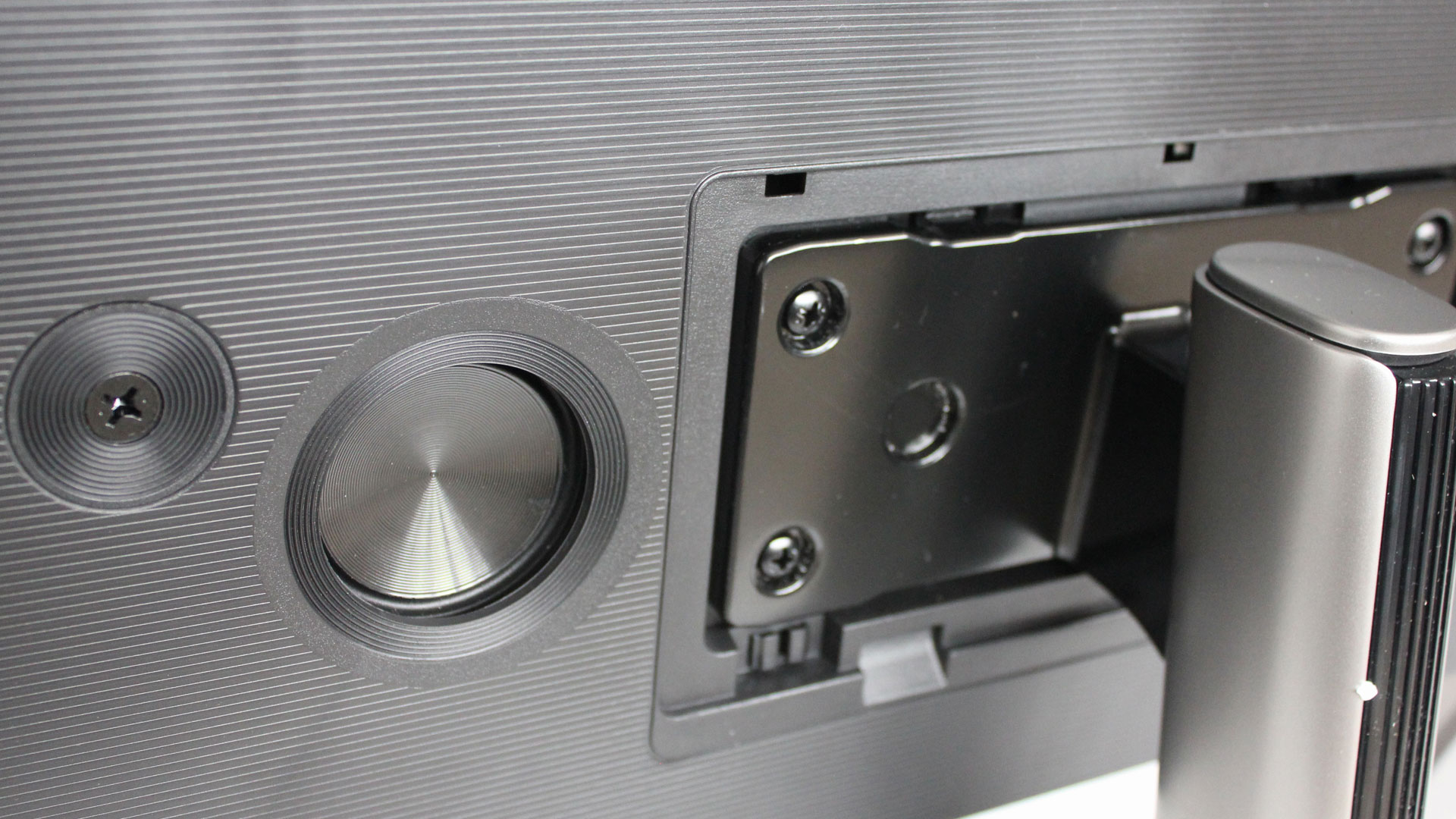TechRadar Verdict
The U7A is a superior mid-range 4K UHD flatscreen, which over-delivers for the asking price. A smart ultra-narrow bezel design and excellent 4K image clarity are the best reasons to audition, but the brand’s Vidaa U smart platform is also easy to live with.
Pros
- +
Polished, minimalist design
- +
Razor sharp 4K imagery
- +
No-nonsense smart platform
- +
Freeview Play tuner
Cons
- -
Underpowered HDR performance
- -
Some image presets disappoint
- -
Limited off axis viewing
- -
Only two HDMIs with 4K@60Hz
Why you can trust TechRadar
The U7A is Hisense’s FIFA flatscreen flagship. Reflecting the brand’s sponsorship of the Russian World Cup, it even boots with a FIFA World Cup 2018 logo.
If you want to feel connected to footie every time you switch on, this is clearly the telly for you.
But what if you don’t turn to soccer for succour? Well, we’ve got good news. This TV turns about to be a solid performer with movies and games too.
The U7A comes in three screen sizes - a 50-inch (HE50U7A1WTSG), a 55-inch (HE55U7A1WTSG, reviewed here) and 65-inch (HE65U7A1WTSG) - and value is high across the range, with prices starting at £649 for the 50-inch variant.

Design
When it comes to design, the U7A is definitely on the ball. The bezel is ultra-thin, much like the panel itself. The set swells only to accommodate electronics and speakers meaning Hisense has done a fine job integrating the edge lighting system.
Sonic provision is above average for a flatscreen: In addition to downward firing stereo speakers, there’s a pair of rear facing woofers, which help flesh out the lower mid-range. And the set sits upon a large, heavy V-shaped central pedestal.
Spin the screen around and you'll find that the U7A offers four HDMI inputs, but only two support full fat 4K @ 60Hz. The remaining two are limited to 4K @30Hz ... which could be an issue if you want to hook up a UHD Blu-ray player, games console and 4K set top box and leave them all plugged in.
Outside of the HDMI ports, there’s also composite AV and twin USBs, plus an optical digital audio output to feed a soundbar if required. The terrestrial tuner is Freeview Play, but there’s also a generic HD satellite tuner if you need to use a dish.
Ethernet is available if you want to hardwire your network connection, rather than the built-in Wi-Fi.
Design TL;DR: With its ultra narrow bezel, thin panel and fancy pedestal, the U7A looks pleasingly up-market.

Smart TV (Vidaa U)
Screen sizes: 50-, 55-, 65-inches
Tuner: Freeview Play, sattelite HD
4K: Yes
HDR: Yes
Panel technology: LED LCD
Smart TV: Yes, Hisense Vidaa U
Curved: No
Dimensions: 1119(w) x 647(h) x 58(d)mm
3D: No
Inputs: 4xHDMI, 2xUSB, composite AV, CI slot
It sure ain’t fancy, but we rather like the Hisense smart platform all the same. It’s fast and easy to navigate with the supplied IR remote, offering quick access to the apps and inputs you’ll use the most.
Netflix, Amazon Prime Video and YouTube all support 4K streaming, and in the case of Netflix and Amazon, there’s HDR support too. Other apps onboard include Rakuten TV and Chilli Cinema. The Freeview Play EPG has a roll back programme guide which neatly incorporates all the main channel TV players.
The set also incorporates a top flight media player, if you want to play files on a NAS or thumb drive. We had no problem playing back our MP3 and MKV file collection. There’s also support for AVI, WMV, MPEG and MOV.
Smart TV TL;DR: The Hisense connected OS may not be as comprehensive as some rival smart platforms, but all the key streaming services are on-board, and there’s no shortage of Catch-Up TV either.
HD/SDR Performance
Full HD picture quality is high, although much of this depends on which image preset you opt for. At its best, the U7A presents images that are dynamic and colour rich. With SDR material, there’s a choice of Standard, Cinema Day, Cinema Night, Dynamic and Sports modes.
But it's worth noting that we feel neither of the Cinema presets can be recommended. Their image is flat, thanks to an unpalatable warm white. The Standard mode simply has a better, brighter balance, while the Dynamic setting is also impactful (in the right way), provided you edge colour saturation back to around 55 on the fuel gauge control and trim five places off the Sharpness dial.
Backlight uniformity is good, and the set’s black level performance impressive. Letterbox bars on widescreen movies are solid and dark, rather than grey and wishy-washy. There’s no unwanted halos of light polluting black areas.
Upscaled HD looks fine, in so much as it’s pixel dense. There’s no sense that the TV is adding any interpolated detail. It may be worth letting your source device handle any upscaling before it reaches the panel, however.

One unique trick is Sports Mode Auto detection. When the set identifies broadcast sports footage, it automatically prompts you to engage its Sports video and audio settings. Given this rather over-saturates colours, this may not entirely convinced be a good thing, but in terms of functionality it’s a step up on the football modes we’ve seen from other TV brands in the past.
This clever Auto-Sports mode only work with tuner footage and not HDMI sources. While the set prompts if you’re watching Formula 1 on C4, it’ll do nothing if you’re watching Sky Sports F1 via a Sky Q box.
Motion handling is soild. Hisense’s Ultra Smooth Motion processing is variable between Standard, Smooth, Film, and Clear (or, if motion handling isn't for you, you can also turn it off). Clear and Standard modes do a good job retaining image detail and smoothing out panning shots, plus there’s also a film mode for 24 fps content.
In terms of colour, the U7A has got it in spades. Guillermo del Toro’s animated musical The Book of Life is dazzling riot of colour. Early on, when the museum’s Mexican exhibit opens up, the screen celebrates the vivid hues without over-cooking primaries.
You’ll need to take care where you watch from, though. Viewed square on, the set delivers profound contrast and colour vibrancy. However, off axis (both vertically and horizontally), there’s a significant drainage of contrast and colour.
Despite its mid-range ranking, the U7A doesn’t compromise when it comes to user control. Indeed, it rivals many screens at a higher price when it comes to tweakery. In addition to adjustable noise reduction and Colour Gamut selection (native or Auto), there’s gamma adjustment, variable between 1.8, 2.0, 2.2, 2.4 and ITU 1886. (For the record, 2.2 is the best option for most viewing conditions.)
There’s a manual gama calibration setting as well. While it’s unlikely many Hisense buyers will seek this level of deep dive, and the panel itself doesn’t particularly reward those who go off-piste in terms of calibration, it’s good to see Hisense opening picture options up like this.
HD/SDR Performance TL;DR: HD SDR looks fine, provided you avoid the sickly Cinema presets.
4K/HDR Performance
Of course, the U7A really comes into its own with 4K content. The set is compatible with both HDR10 and HLG, but it’s not a bright HDR performer: We measured peak luminance at 280 cd/m2 (nits) in HDR Dynamic mode, using a 5 per cent window.
This measurement is relatively low, even in the mid-range. However, the screen still delivers a dynamic image, not least because that black level performance is better than many similarly priced panels. What’s more, the U7A doesn’t overly dim HDR content like some low brightness HDR compatible models we’ve encountered.
Overall 4K image clarity is excellent, presenting a full screen of 2160p detail - UHD Blu-ray, 4K SDR from Sky Q and 4K streams from Netflix and Amazon Prime all look pin sharp. Annihilation on Netflix exhibited copious detail in the mutant swamplands, while Spider-Man Homecoming from Sky Cinema reveled in ravishing depth.

The HDR Dynamic image preset really helps here, boosting luminance and emphasising ultra fine detail. In comparison, the HDR Day and Night modes look more subdued.
The 50Hz panel boasts 10-bit precision, augmenting 8-bit depth with FRC (Frame Rate Control) dithering. This might not sound appealing, but it works surprisingly well. Hooked up to a Sky Q box outputting 2160p 10-bit, it exhibits even, gradation-free hues.
The set looks particularly good with 4K console games. If you’re plugging in a PS4 Pro or Xbox One X, it’s worth hunting the Game mode down. In Standard mode, image lag is moderately high at 47.6ms. However, with Game mode on, this drops to a far more acceptable 30.9ms.
4K/HDR Performance TL;DR: Not the brightest mid-range HDR performer on the field however overall balance and pop are good, thanks to an above average black level performance and vibrant colours.

Sound
The set has a formidable set of lungs. At 2x10W, the sound system certainly doesn’t lack for welly and the mid-range makes a decent fist of adding weight.
While a separate soundbar would be an improvement, the U7A’s resident sound system can be considered above average in the flatscreen pack.
Ultimately, Thanks to a pair of rear-mounted drivers, this set sounds better than you might expect. It has a crisp, clean treble and reasonable mid-range heft.
Other panels to ponder…
The Hisense U7A finds itself pitted against some interesting mid-range competition. The Sony XF80 Series, available in 55-, 49- and 43-inch screen sizes, combines smart design with a similarly aggressive specification.
The 55-inch KD-55XF8096 features a narrow aluminium frame with central pedestal stand, and employs the brand’s highly regarded 4K X-Reality PRO image processor. HDR support likewise covers HDR10 and HLG. Like the U7A, the XF80 has LED edge lighting, coupled to a Dynamic Contrast Enhancer to boost dynamic range.
There's also the Panasonic EX600 series, available in 65-, 55- 49- and 40-inch screen sizes. It uses a high contrast panel, with advanced colour processing, for high impact images. It also supports HDR and HLG, and has a novel Switch Design pedestal that allows stand width to be adjusted according to preference.
Verdict
If you’re after a mid-range 4K TV that doesn’t look like an escapee from the bargain bin, the U7A is well worth an audition. It’s nicely turned out and boasts an impressive feature suite. Overall image quality is high (despite the low HDR rating), provided you stick with the Standard or Dynamic image presets.
The brand’s proprietary connected platform offers all the key streaming services, helped by a Freeview Play tuner, with integrated Catch-Up TV. Throw in that novel Auto-Sports mode, and reasonable audio, and you have a fine mid-field player for the price.
Steve has been writing about AV and home cinema since the dawn of time, or more accurately, since the glory days of VHS and Betamax. He has strong opinions on the latest TV technology, Hi-Fi and Blu-ray/media players, and likes nothing better than to crank up his ludicrously powerful home theatre system to binge-watch TV shows.

